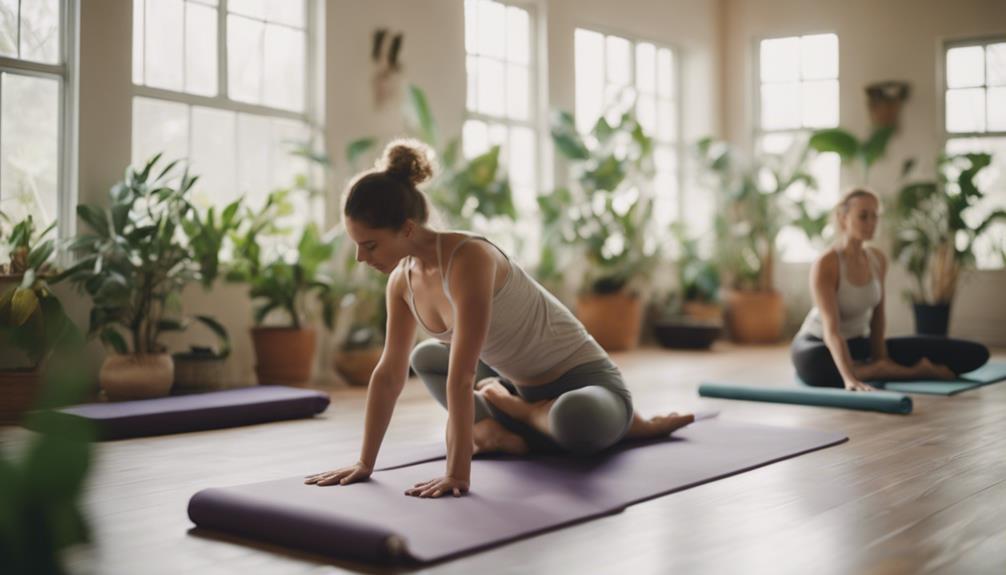Yoga Fitness

Yoga fitness is an increasingly popular practice that combines physical exercise, mental clarity, and spiritual growth. This holistic approach to wellness has garnered attention in recent years, with many people incorporating yoga into their daily routines. In this blog post, we will explore the various dimensions of yoga fitness, its benefits, types, and how to get started on your journey.
Understanding Yoga Fitness: More Than Just Exercise
Yoga fitness transcends the boundaries of traditional exercise. While many view yoga solely as a physical practice, it integrates postures (asanas), breathing techniques (pranayama), and meditation. This multifaceted approach helps enhance flexibility, strength, and balance while promoting mental clarity and emotional stability. By engaging in yoga fitness, practitioners can experience a profound connection between body and mind, fostering holistic health that goes beyond mere physical appearance.
The Health Benefits of Yoga Fitness
The benefits of yoga fitness are extensive and well-documented. Regular practice can lead to improved flexibility, increased muscle strength, and better posture. Additionally, yoga has been shown to reduce stress levels, alleviate anxiety and depression, and promote better sleep quality. Research indicates that individuals who practice yoga regularly often experience lower blood pressure and enhanced cardiovascular health. Furthermore, yoga fitness can aid in injury prevention and rehabilitation, making it a valuable addition to any exercise regimen.
Different Styles of Yoga Fitness: Finding Your Fit
There are numerous styles of yoga fitness, each offering unique benefits and challenges. Popular forms include Hatha, Vinyasa, Ashtanga, Bikram, and Yin yoga. Hatha yoga is ideal for beginners, focusing on basic postures and alignment. Vinyasa yoga incorporates fluid movements, linking breath with motion, making it a dynamic workout. Ashtanga yoga is a rigorous style that follows a specific sequence of poses, ideal for those seeking a challenging routine. Bikram yoga, practiced in heated rooms, promotes detoxification and flexibility. Lastly, Yin yoga emphasizes deep stretching and relaxation, perfect for stress relief. Exploring various styles can help individuals find the approach that resonates with them.
Related Posts:
How to Get Started with Yoga Fitness: A Beginner’s Guide
Starting your yoga fitness journey can be both exciting and daunting. To begin, consider attending a local class or following online tutorials to learn the basics. Familiarize yourself with common poses such as Downward Dog, Warrior, and Child’s Pose. Invest in quality yoga gear, including a comfortable mat, supportive clothing, and props like blocks or straps to aid your practice. Establish a consistent routine, setting aside time each week to practice. Remember to listen to your body and progress at your own pace, honoring your limits while pushing your boundaries.
Integrating Mindfulness into Yoga Fitness
One of the unique aspects of yoga fitness is its emphasis on mindfulness. Practicing mindfulness during yoga involves being present and fully engaged in each pose, focusing on breath and movement. This mental component enhances the physical benefits of yoga by reducing stress and promoting emotional well-being. To cultivate mindfulness, consider incorporating meditation techniques into your yoga practice. Spend a few minutes in silence before and after your session, reflecting on your thoughts and feelings. This integration will deepen your connection to your practice and enhance your overall experience.
Yoga Fitness for All Ages: Inclusivity in Practice
Yoga fitness is an inclusive practice suitable for individuals of all ages and fitness levels. Children can benefit from yoga’s emphasis on flexibility and mindfulness, while seniors may find relief from joint pain and improved balance through gentle yoga forms. Adaptations and modifications are available for those with injuries or limitations, ensuring everyone can participate. Community classes and family yoga sessions are great ways to introduce yoga fitness to diverse age groups, fostering a shared experience of wellness and connection.
Common Misconceptions About Yoga Fitness
Despite the growing popularity of yoga fitness, several misconceptions persist. One common myth is that yoga is only for flexible individuals. In reality, yoga is about progress, not perfection. Practitioners of all flexibility levels can benefit from the practice, as it encourages improvement over time. Another misconception is that yoga is solely a female activity. Both men and women can enjoy the physical and mental benefits of yoga fitness. By addressing these myths, we can promote a more inclusive understanding of what yoga truly represents.
Creating a Sustainable Yoga Fitness Routine
To reap the long-term benefits of yoga fitness, it’s essential to establish a sustainable routine. Begin by setting realistic goals, whether it’s attending a weekly class or practicing at home for 20 minutes a day. Track your progress and celebrate small achievements to maintain motivation. Vary your practice to keep it engaging—try different styles, explore new poses, or practice with friends. Most importantly, remember that yoga fitness is a personal journey, and the key is to enjoy the process while cultivating patience and self-compassion.
Conclusion
Yoga fitness is a transformative practice that offers a myriad of physical, mental, and emotional benefits. By understanding its principles, exploring various styles, and integrating mindfulness, individuals can unlock their full potential. Whether you’re a beginner or an experienced practitioner, embracing yoga fitness can lead to a more balanced and fulfilling life. Start today, and embark on a journey that nurtures both your body and mind.